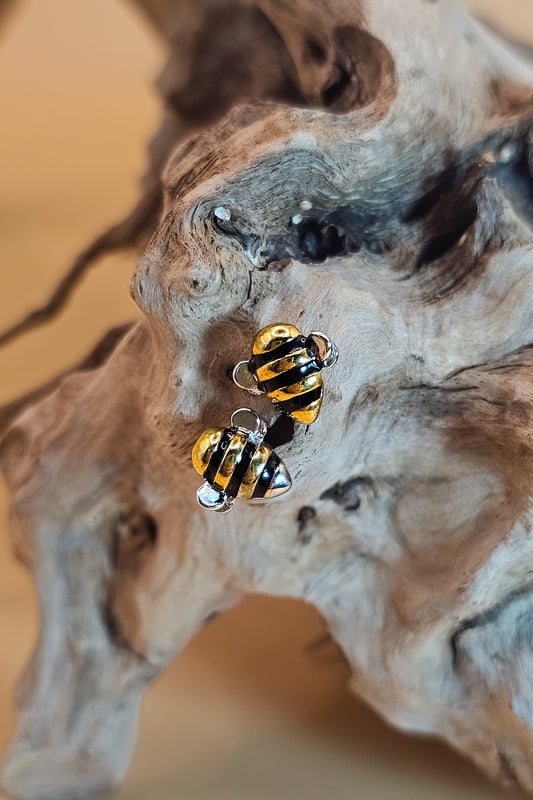Bees do not have ears as we know them.
This does not mean honeybees are deaf.
Bees pick up sound in their own unique way that is best suited to them.
Several scientific research projects have confirmed that bees do hear. They pick up vibroacoustic signals.
In 1989, bees were trained by researchers Towne and Kirchner to respond to a sound signal by leaving the feeder they were at so they would avoid a mild electric shock. Thus, it was established that honeybees are able to capture airborne sounds by detecting air particle movements.
More recently, in 1991, Kirchner and team trained bees to enter a feeder and turn right or left depending on a sound signal.
The frequency of sound waves is measured in Herz (Hz), and honeybees produce a variety of vibration and sound frequencies from below 10 Hz to above 1000 Hz. As of 2015, it was shown that honeybees detect sound frequencies up to around 500 Hz (McNeil 2015).
You might ask how bees detect sound since they do not have ears.
There is undoubtedly much more research to be done in this area, but so far scientists concur that bees pick up sound by using their legs and antennae.
This unrelated 1:26-minute video by Factsma asks, how do bees hear?
A very particular part of the honeybee’s antennae sense and collect vibrational sound waves. These sensory cells are a chordotonal organ called Johnson’s organ. These are found in the second segment of the antennae and are known as pedicel. There are three major types of chordotonal organs but only two are found in bees: Johnston’s organ and subgenual organ. Tympanal organs are absent in bees.
The Johnson's organ converts mechanical vibrations into nerve impulses by using its 300+ nerve cells (scolopidia) that are positioned in a bowl shape, and relays these impulses to the brain.
Capturing sound in this way is critical in the transference of vital info about where to find foraging grounds. When honeybee worker bees do the waggle dance, their wings vibrate and their abdomens waggle, setting off a series of vibrations and sounds. Other bees detect and decode the waggle dancer's message. This is how honeybees share vitally important information with each other.
In honeybees, organs in the legs called subgenual organs pick up sound vibrations.
In addition to airborne sound signals, substrate-borne vibrational signals form part of worker bee communication. These are perceived by the subgenual organs in the legs, which are the other form of chordotonal organs. These are located in the tibia of each leg. The substrate vibrations, or sounds, sensed by these organs in the legs are transformed into nerve impulses (Kilpinen and Storm 1997) and transmitted to the central nervous system (Hunt and Richard 2013).
At other times, honeybees will pipe and buzz in the nest for various reasons, and these are detected by hive mates. It was found in 2008 (Rangel) that scout bees emit piping signals to prepare worker bees to swarm when it is time to seek a new nest. The signals we know the most about are the honeybee queen's tooting and quacking signals.
Some of this information may or may not apply to bumblebees and solitary bees but has been proven in honeybees.








